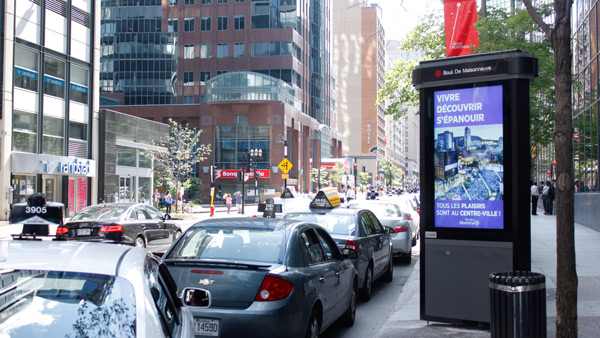Outdoor digital displays must be able to withstand direct sunlight, extreme temperatures, heavy humidity, rain, snow, dust, dirt, wind, and vandalism. How this is achieved varies depending on who you choose to work with. Before going too far with any outdoor LCD display supplier, here are some considerations for outdoor LCD displays:
Can the Display Perform in Direct Sunlight?
There are several reasons placing an outdoor digital display in direct and indirect sunlight is challenging. Here are a few design challenges:
Displays must be very bright to be visible in the sun. Luminance should normally be 3500+ nits through the cover glass.
Displays should be backlit with high quality LEDs. Remember that LEDs experience degraded luminance capability over time. Make sure the display you choose can maintain brightness for its life.
Direct sunlight can cause the liquid crystal to boil and result in black blotching on the display, a phenomenon called Solar Clearing. The LCD needs to remain below this boiling point, which requires some mechanism for cooling the LCD.
How Does the Display Handle Temperature and Humidity?
Beyond sunlight, temperature and humidity are the next biggest factors to control for in the design of an outdoor LCD display. Here’s why:
- Displays have to regulate internal temperature to produce a bright picture. If a display cannot keep cool on hot days, or keep warm in cold conditions, brightness will drop-off.
- How exactly do you cool the display? A/C systems drip condensation inside and outside the display, require maintenance, and consume significant energy. How do you heat the display in freezing conditions?
- The display must be sealed to prevent condensation inside the cover glass and protect internal electronics from getting wet. This means the display needs to work in rain, sleet, snow, and hot, humid summertime. Putting an LCD screen inside an environmentally sealed box is almost always a poor solution.
- On-board electronics have to be rated to for the internal operating temperature of the display. This means high-quality components are a must.
What Happens When Something Goes Wrong?
Placing a display outside has its uncertainties, some of which may result in display problems. Here are a few more questions to consider:
- In the event of a power outage, what happens to the display? First of all, does the display let you know that it has lost power? When power is restored, does the display automatically boot back up and resume showing content?
- If you’re not physically present to see the display running, how can you be sure it is actually showing content? Can it detect stalled video signal? Can it alert you when the screen is black?
- How easy is it to service the display in the event a component needs repairing? Will it take a service call to find out what’s wrong and then a second trip to repair it? How much will that cost compared to fixing it remotely via software or with just one service call?
There are many more questions to ask and things to consider other than what’s been brought up here regarding outdoor LCD displays. Hopefully this introduction has helped make clear that true outdoor digital displays are not re-packaged indoor displays. If you start thinking about sun, heat, cold, and humidity then you’re well on your way to finding out just how different the indoor and outdoor display environment really is.

